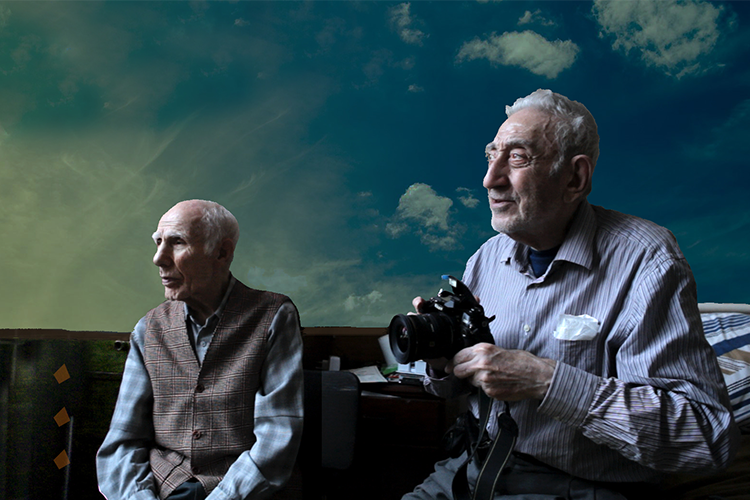
“Did I fall asleep?”
The petite woman, who asked to be called Selma in the film, asked after being awakened by a boom from the construction outside.
“I drop like that.”
One minute she was talking about not having the money to get married as a young woman, the next moment she was slumped over.
With _Distant Constellation_, director Shevaun Mizrahi creates a film that explores the contrast between innovation and idleness by juxtaposing the modernity of a construction site in Istanbul with a neighboring elderly home, where time seems to stand still between the white barren walls.
Mizrahi lets us in on the stories of unique individuals, both in the home and at the construction site—An elderly man, once a famous photographer, who struggles to see through the viewfinder and uses a magnifying glass to see the buttons. Two men who ride the rest home elevator as a pastime, preventing other elderly people from using it. A construction worker who is low on the totem pole and trying to support a family. An irreverent man in his 70s who recalls Parisian sex parties, reads erotic literature aloud and tries to persuade Mizrahi to marry him.
Despite the monumental age differences and polar-opposite settings, similarities between the characters featured are highlighted, lending to the notion that some things are constant no matter what stage of life a person is in.
Mizrahi also came back to the same characters throughout the film, allowing viewers to build a connection with them, notice their distinctive tics and watch their stories unfold.
In the rest home, especially, I felt like a “fly on the wall” at many times, quietly watching the interactions, many of which hilarious, between the elderly individuals. Mizrahi only listened, allowing them to speak freely to her or one another and for as long as they wished. This created a strong sense of candidness in the film’s content. Similarly in the construction site, filming took place from a point outside the action, like at the back of an elevator behind the workers or to the side of the table where they ate lunch and conversed, allowing the exchanges and “events” to occur naturally, as if no one was watching.
My favorite element of the film was Mizrahi’s cinematography, which I found appealing in a “less is more” manner. Lengthy still shots allowed viewers to take time to closely observe a scene, noting the smallest details of a setting and the minute features and mannerisms of the characters in the frame. Zoomed-out views of the entire construction scene created moments of detachment and distance, and drastically zoomed-in shots of a character’s faces allowed viewers to see them in the most intimate way as they told a story.
Natural light (or lack thereof, at times) was also emphasized throughout the documentary. This added to the tone and mood of the content, creating a visual effect synonymous with the tone and mood of each moment.
I would have liked to learn more about the characters’ biographies, because I was left with unanswered questions about each of them. However, Mizrahi said her intentions behind the film were to prompt curiosity and reflection without any political agenda attached. The unfinished product I saw at True/False did exactly that. Thankfully, she is considering creating a website with profile of each featured person, to answer those questions spawned from the film.
With _Distant Constellation_, Mizrahi proved that a film doesn’t have to have an activist message to be communicative, profound and thought-provoking.
**MOVE gives _Distant Constellation_ 4 out of 5 stars.**